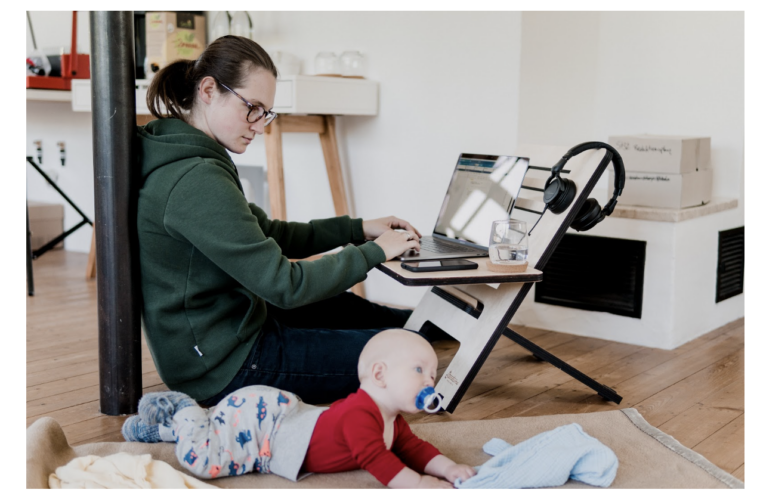Taking The Plunge Towards Self-Employment
Credit: Unsplash
Living in an age dominated by technology, it’s never been a better time to start building your career from home. For stay-at-home parents, self-employment is a popular decision as it means you can tailor your work to your lifestyle. Make sure you’re getting the correct EIN data to ensure everything is as it should be, you can use searchings like EIN Search to do this.
Whatever your skills are, it’s likely that you can build a career from home. All you need is your laptop and a positive mindset. Once you get started, the next big step is networking and getting yourself out there.
Becoming self-employed is an exciting, albeit scary step. Working for yourself means greater independence, greater flexibility in your life and the chance to expand your skills and grow professionally.
Making the right decision for you.
For many of us, achieving that perfect work-to-life balance can be tricky. Even when in a job that we enjoy, working rigid hours can at times feel suffocating.
With little ones at home, kindergarten or school, being in full-time employment brings several complications. The cost of childcare and coordinating work hours with school pick-up times makes life feel rather hectic. It is manageable given the right support but is not necessarily the right lifestyle for everybody.
Perhaps one of the greatest incentives for being self-employed is having more time for what matters – spending time with family. That’s not to say that working for yourself isn’t a high workload; in many ways, it requires a great deal more organisation and initiative than standard full-time employment. But being self-employed means working on your terms, so you can have time to focus more on your family and yourself.
You can love what you do for work and crave a balance with relaxation and family time. Happier, more fulfilled minds will be boosted with creativity and innovation. Another added benefit of working for yourself is creative freedom. While it may not feel stable all the time, it leaves room for exciting new growth and opportunities.
Self-employment is an excellent step for those confident in their skills and looking for a flexible working life.
So, once you’ve made the plunge – what are the first steps?
Registering As Self-Employed
The first thing you must establish is whether you need to register your business. This depends on your location and business structure. If it’s necessary to register, simply go to the U.S Small Business Administration.
Once your business name is registered, it’s protected. There are multiple different ways to register your company name, depending on the nature of your business. You can set up a domain name, which will define your company’s identity. A domain name would typically take the form of a URL or website. Alternative ways to register your business include establishing a DBA name or an entity name, both of which allow you to use a unique name in your state.
Finally, trademarking your business means your goods and services are fully protected, meaning your chosen name is uniquely yours and cannot be used by anyone else.
Sorting out your finances.
When working for yourself, you will send invoices each month to get paid. This might feel strange at first, especially if you’re used to just receiving the money each month without having to fill anything in.
The good news is – sending invoices is pretty straightforward once you’ve got the hang of it. The main details required in the invoice are company information, details of the goods and services provided, and money owed.
Sometimes, an added challenge can be managing invoice payments. To stay on top of this, you can send your invoice payment using services which automate the process. Using platforms such as these means the invoicing process is all done within the system. This way, you can check the status of the payment and keep track of them. It also means that a range of payment options are available, a win-win situation for both you and your clients.
Another important step is putting money aside. When working for yourself, income is not always consistent. The best way to ensure that your savings are still growing at a steady pace is to put aside a certain amount of money each month.
There is a deduction from tax payments for health insurance. Money is also deducted for those who work as caregivers.
Organising your taxes.
Undeniably, the most overwhelming aspect of self-employment is both understanding and staying on top of your taxes. When working for a company, the tax side of things isn’t something you have to worry about as much. But when working for yourself, it’s vital to stay on top of your tax returns.
Firstly, sign up for a social security number. The IRS will then provide you with a unique tax code and voila – you are set up to pay tax.
Typically, tax returns will be filed quarterly. Your taxes consist of Medicare and Social Security. It is not largely different from the amount of tax paid in regular employment and stands at 15.3%.
You will need to get a federal tax ID number, also known as your Employer Identification Number (EIN). Once you have this number, you can hire employees, form partnerships, file tax returns and get your business’s feet off the ground. As tax obligations vary from state to state, you will need to research how this operates in your state.
You may also need to apply for the relevant licensing which will depend on where your business operates. With this side of setting up your business, it may seem unfamiliar at first but once you dive into the research you’ll soon become a pro.
Set up a nice working space.

Credit: Unsplash
Now, that’s the boring stuff out of the way. Essentially, there are a few key things you need to be aware of, such as different state regulations, tax requirements and so forth. Luckily, the online processes will guide you through this. Once you’ve done it one time, it won’t be so scary and will become second-nature.
Now, this step may sound insignificant compared to the others. But it is an understated and critical aspect of self-employment. Having a good set-up for your work will keep you in the right mindset.
Reserve a part of the house to be your designated workspace. Working from the bedroom makes it difficult to work efficiently, as we associate the room with sleep and relaxation. While it can be tempting to stay cosy in bed or on the sofa with your laptop propped on top of you, this won’t get your entrepreneurial and creative juices flowing.
Having a sense of ambience when you are working will help to increase focus. Whether through scents, music or visuals, create an environment that you find calming. Sometimes, you can’t control outside noise, so investing in a good pair of headphones is a good idea.
Other things to create a good workspace include having a comfortable desk chair. You will likely be spending a lot of time there, so make sure it’s one that suits you.
To make sure your productivity is at its peak, have a couple of different notepads. One for your accounts, one for your different clients and projects, and one for jotting. If you make a habit of scribbling down ideas as they come to you, you will be surprised at how these later manifest into great work.
Don’t put too much pressure on yourself.
As well as the logistical side of self-employment, the mental leap can be challenging too. Working for yourself means that your earnings and overall success will feel very personal. In the beginning, when things maybe haven’t taken off yet, this can be disheartening. But this is incredibly normal – so expect to wait a while before seeing results.
If things feel slow, this is not a reflection of your capabilities and doesn’t mean you are failing. It takes time to get your name out there. As well as providing your services, there will be marketing and promotional tasks too. Creating a website, email, social media accounts and so forth. You may find that you’re involved in several things such as these, which are new to you. All while trying to get your head around this new way of working!
Be kind to yourself and remember that it takes time for everyone. The hardest part is getting started. As your business grows, you can hire more employees to help out and take certain tasks off your hands. This will leave you to focus on what you do best, and continue growing your business.
Always look ahead. It will be hard at the beginning. But once you get used to it, the benefits of being your own boss will outweigh this. You can kiss goodbye to commuting and enjoy spending more time at home. Self-employment is challenging but liberating and allows you to live whatever type of life you choose.

